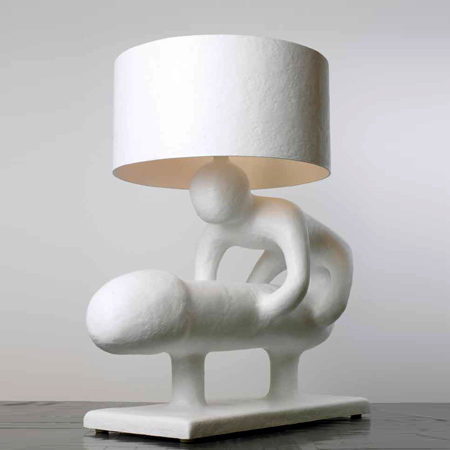
Furniture II by Atelier Van Lieshout at Carpenters Workshop Gallery
An exhibition of new work by Atelier Van Lieshout is on show at the Carpenters Workshop Gallery in London this week.
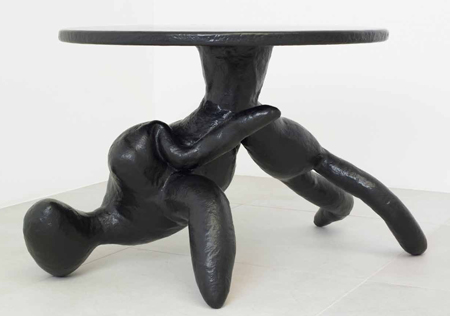
Called Furniture II, the collection of furniture follows on from Atelier Van Lieshout's exhibition at the gallery in October 2007 (see our previous story).
Above: Bodytable II, 2009, Fibreglass
Top image: Fertility Lamp, 2009, Fibreglass
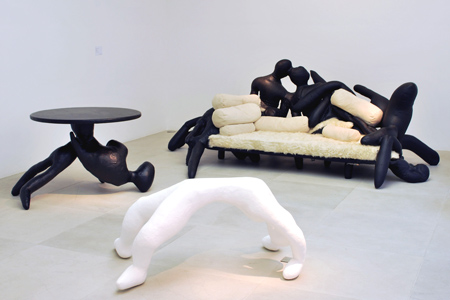
Pieces on show include a sofa modeled on human bodies piled up with cushions, a lamp stand representing a decaying body and a series of foam and fibreglass seats called Fossil.
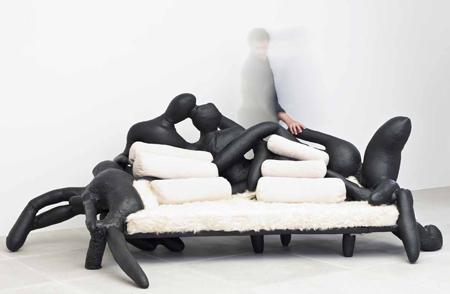
Above: Body Sofa, 2009, Fibreglass, upholstery
Here's some more information from the gallery:
--
Atelier Van Lieshout
Furniture II
9 October – 14 November 2009
Following the success of Atelier Van Lieshout’s recent international exhibitions, including Russia’s ‘Cradle to Cradle’, ‘Utopics’ at the 11th Swiss Sculpture exhibition, Biel and ‘Telling Tales’ at London’s Victoria and Albert Museum, Carpenters Workshop Gallery are pleased to announce Furniture II. This new exhibition will showcase new limited edition and unique works of ‘functional sculpture’ from the Rotterdam based studio.
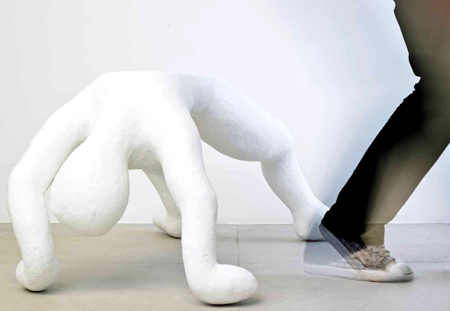
Above: Woman, 2009, Foam, fibreglass, skin
Atelier Van Lieshout’s sculptural works since the 1980’s have been based upon the human body and its functionality. Famed for their creations that celebrate life, sex and death, often using bold and provocative illustrations, their work demonstrates a belief in art’s ability to provide a space in which a person can explore any and every idea. Their works appear to confound the distinction between design and art, morality and good taste. With a fascination bordering on obsession with the human body, this collection continues to explore new shapes and forms influenced by the human figure with all imperfections and complexities carefully manipulated to create functional sculptures that are at once abstract but also familiar.
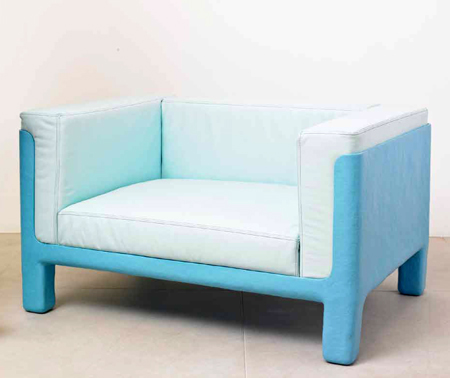
Above: Le Corbafrique, 2009, Fibreglass, leather
Atelier Van Lieshout’s new collection is strongly aligned with Carpenters Workshop Gallery’s artistic direction of presenting design pieces with strong sculptural elements where form prevails over function. Furniture II epitomises this approach.
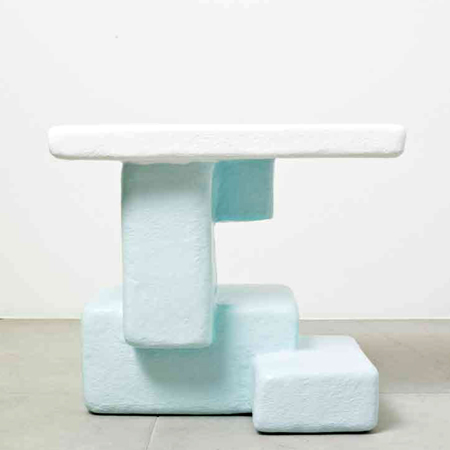
Above: Cubist table (Medium), 2009, Fibreglass, wood, foam, coating
Body shaped sculptures have been transformed by the strategic positioning of just a few items that allow them to become functional pieces. The design process behind these works has been developed in two different ways. The first approach with objects such as the Bodysofa, the function of the object has come about purely as a result of the end shape of the sculpture. In their second approach, actual impressions of people have been used as starting points within the Fossil series and Fat Bastard. The resulting forms have not so much been designed than generated as a result of the creative process.
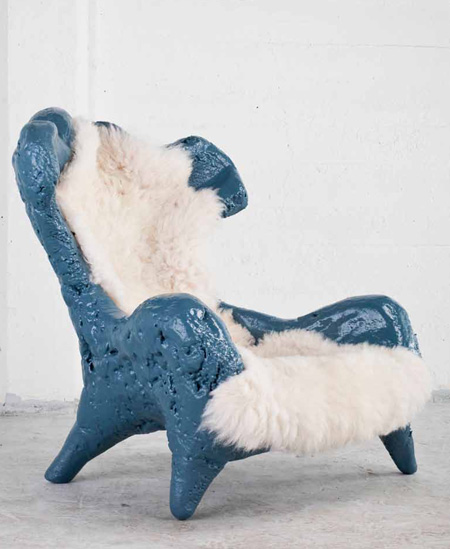
Above: Fossil Chair, 2009, Foam coating
Life is embraced through these new pieces: “I make sculptures and paintings about daily life. I don’t like borders—or morality”, Joep remarks.
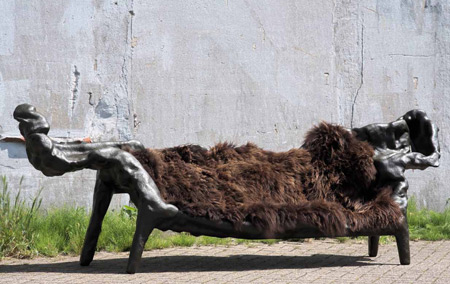
Above: Fossil (Interwoven), 2009, Foam, fibreglass, skin
This exhibition represents the human lifecycle, exploring the shapes and functionality of the human body and juxtaposing these forms with furniture.
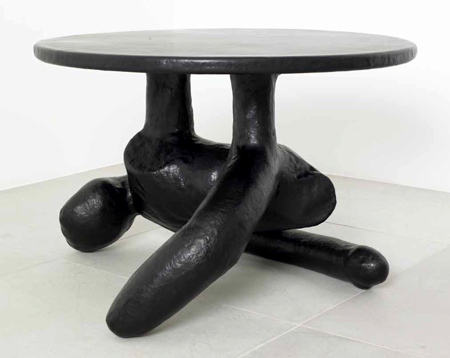
Above: Bodytable I, 2009, Fibreglass
Highlights
Fertility Lamp is an example of AVL’s fascination with the human body. Imbued with the same sense of humour as many of their previous works, the oversized organ conjures up images of tribal fertility gods and male insecurities of size and performance. The proportions and the pose are exaggerated, abstracting the form to a comical level.
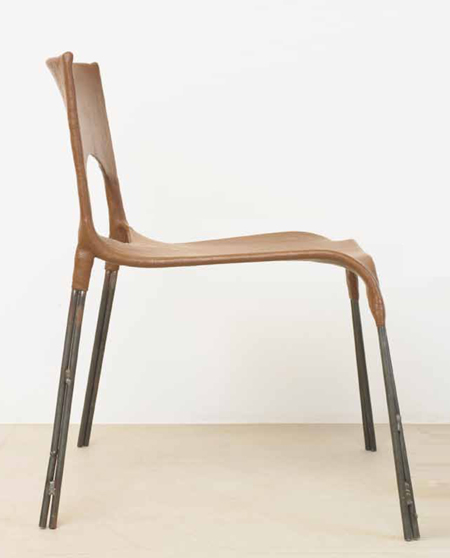
Above: Stretch Chair, 2009, Fibreglass, steel
The Body Sofa which delights audiences depicts bodies piled up together with scattered pillows to create a sculpture that functions as a sofa almost incidentally. Its use is a by-product of its design. Sculpted with a simple interference action, it has morphed into a piece of furniture.
AVL are merging art and life, using it as a tool to explore the idea of conception through the PappaMamma Lamp, complete with Penis, Vagina and Foetus. This lamp is a provocative illustration of the beginnings of human life.
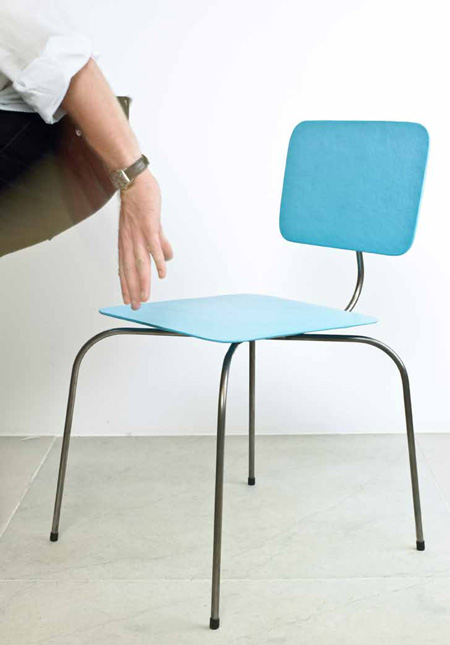
Above: Primitive Modern (chair), 2009, Fibreglass, steel
At first glance, a little unsettling, however the clever use of the body’s organs to give the piece balance and form together with its narrative make it an influential work in the collection.
Homo Martatus is an exploration into death, a full scale skeleton decomposing under the light it grasps. The deterioration of flesh depicts the transformation the human form undertakes after death. There is also a clever play on the myth of mortality and light, this element changes the work from sculptural to functional.
The fossil series consists of several chairs, chaise longues and sofas. The fossils are reminiscent of a primitive shape, half natural, half manmade. Like a fossil, these nomadic pieces reveal the identity of their prehistoric host but also resemble rocks or volcanic stone. The fossils are provocative and thoughtful sculptures as well as functional sitting places and pieces of furniture which inspire visitors to nestle.
They offer an interesting place to gather, read, have a picnic, and dream away with the movement of the clouds or the sounds of the city.
Fat Bastard is an example of a subject that Van Lieshout often returns to; that of death and decay. It broaches this subject in a brutal, visceral manner depicting an oozing, rotting shell that seems to have been torn open and a person removed from its hollowed interior, conjuring up images of death and thoughts of the grim reaper.
ATELIER VAN LIESHOUT is an established art practice based in Rotterdam. It was set up by Joep van Lieshout in 1995 as a multi-disciplinary workshop where artists, designers and architects can collaborate and produce works of art. The range of their work varies from sculptures and installations to functional furniture and mobile home units. The designing and making of each and every piece takes place at Katoenveem-AVL’s own workshop. AVL’s creative team produces practical, uncomplicated and substantial works of art which permit an element of what they describe as the ‘absence of design’.
Recurring themes that are explored by AVL are autarky, power, politics and sex. Works by AVL can be found in private collections and a number of museums throughout the world. These new pieces exploit common industrial materials such as coloured polyester and resin. AVL designs furniture to satisfy curiosity by thoroughly exploring the realms of possibility and questioning the very morals our society is built upon.